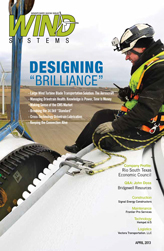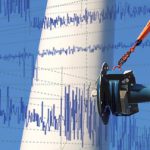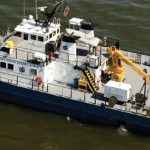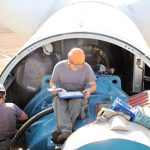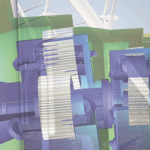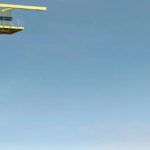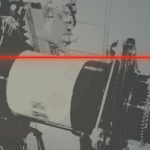As the U.S. wind industry transitions to a larger install base of turbines that are either out of warranty or soon to be, the focus of every owner/operator turns to optimizing their operations and maintenance and more specifically, managing the health of the drivetrain and its components. The cost of failures as it relates to drivetrain components can quickly erode an O&M budget—especially if these failures were not anticipated or if they occur within a timeframe that was not expected. Drivetrain health management is the key to understanding the existing condition of drivetrain components as it provides effective failure mode prediction (not just fault detection) and it allows for well-timed planning of maintenance activities.
The English philosopher Sir Francis Bacon has been credited with the phrase, “knowledge is power”. This is never more appropriate when it comes to drivetrain health management and failure mode prediction. This knowledge comes from two sources—the knowledge that a health management system provides to the end user and even more importantly, the knowledge, expertise, and experience that went into developing such a system. There is a ton of data that can be generated by health management systems such as condition monitoring, lubrication sampling, oil particle counters, SCADA, etc., but the true value of these systems lies with the processing and analysis of this data. Romax InSight software combines all these various health management tools into one system (Table 1) and InSight services provides the engineering know-how to implement processes, re-engineer components or develop retrofit modifications to reduce failures. Grease sampling is a common monitoring technique for large bearings, and Romax InSight iDS software provides tools to trend grease ferrography and elemental composition results; yet as shown in Figure 1, without implementation of proper sampling procedures the monitoring can be erroneous. This result is included in procedures developed for technicians to illustrate why to sample a certain way.
The “Maintenance Scheduling” sidebar (p. 39) shows the progression of main bearing failure where the specialized analysis implemented within the InSight software provides at least six months prediction on failure. Having this knowledge well in advance of the pending failure is equally important to managing drivetrain health. Figure 2 looks at the optimal time to perform maintenance as it relates to three maintenance models. The preventive model results in high cost of maintenance with low cost of failure. Reactive maintenance results in a low cost of maintenance with high cost of failure. The intersection of these two modes is predictive maintenance and is determined to be the optimal maintenance time. However, it should be noted that this optimal time is not necessarily a one-size-fits-all model. Having the information of a failure mode (knowledge is power) well in advance of the pending fault (time is money) puts the owner/operator in the driver’s seat for scheduling the maintenance activity and allows for well-informed decisions. It provides flexibility on when to order parts, resource availability, and when to deploy a crane (if needed); and these may not always align with the “optimal” maintenance time.
So, when we say “optimizing O&M” what do we really mean? It means optimizing production—ensuring turbines are available when the wind is blowing and ensuring turbines are operating at peak performance. It also means minimizing operational costs through balancing cost of maintenance with cost of failure (as shown in Figure 2). When we take these into consideration with the understanding that time is money, then the objectives for any maintenance related activity is to schedule during low wind seasons (ideally), and when labor and equipment is available, and at most reasonable cost.
Field experience is important in developing effective and reliable analysis tools (See “Failure Cause Analysis,” p. 38). Root cause analysis and field inspections of drivetrain failures provide important feedback in validating analysis techniques. We all want to find the needle in a haystack so practical experience is just as valuable. With drivetrain health management there are many factors to consider when determining the best solutions—size of the wind farm, size and age of the turbines, installed condition monitoring hardware, and component failure rates. These are all considerations in determining what’s best. Ideally, a well-established continuous monitoring program is in place and a historical database is being established. But in cases where CMS hardware is not yet installed what are my options? As an example, Figure 3outlines some tools and techniques to consider when establishing a drivetrain health management program for main bearing failures. Figure 4
When it comes to reducing risk with knowledge and time, and turbine O&M cost savings, the long-term benefits of a health management program are clearly measureable—prevent catastrophic events, convert downtower repair/replacement into an uptower repair, effectively manage spare parts inventory, curtail operations for prolonged production, mitigate insurance risks, and amortize equipment costs.



















